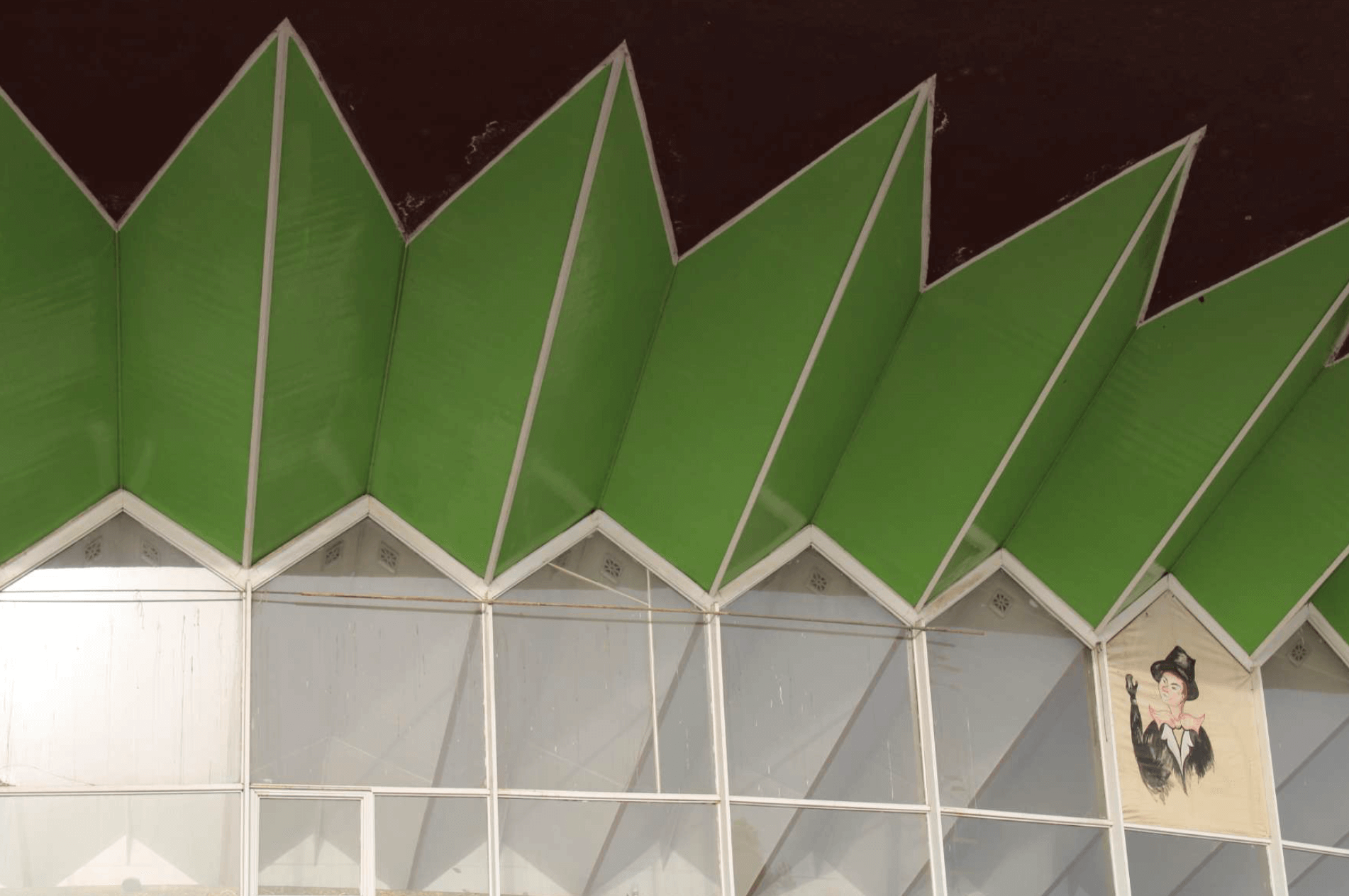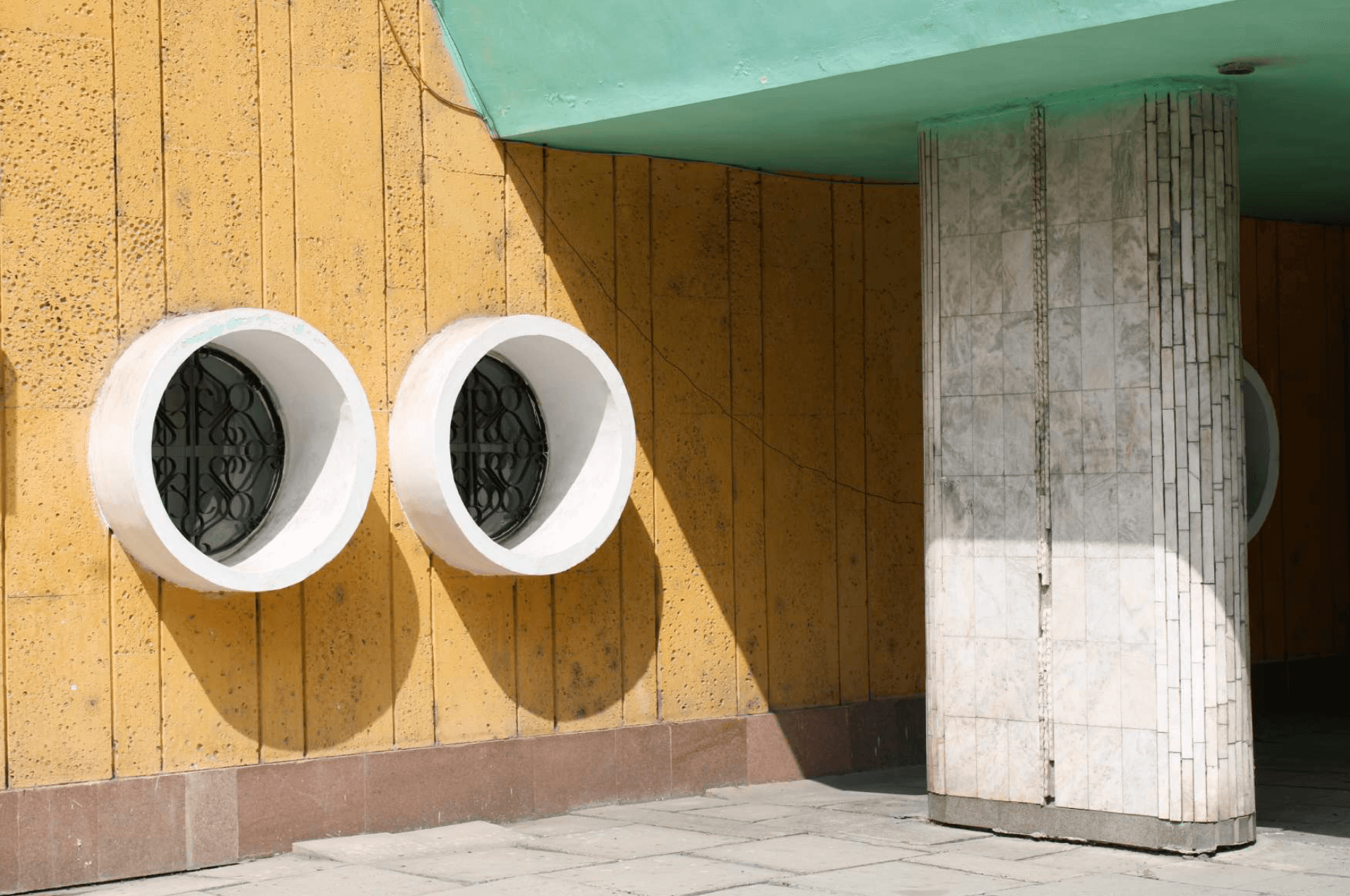Colonising Culture: ideology, modernity, and the Soviet circuses of Central Asia 7 min read
In the mid-1920s, the borders of the five Soviet republics of Central Asia – Kazakhstan, Kyrgyzstan, Tajikistan, Turkmenistan, and Uzbekistan – were created by the newly established Soviet state. The Central Asian republics became integral to the Soviets’ ultimately colonial modernising project: widely considered backward by Moscow because of their Islamic and nomadic cultures, Central Asians were paradoxically encouraged to develop their sense of national identity while simultaneously integrating into a relatively opaque “Soviet” identity. With state borders mostly non-existent in Central Asia before Soviet colonisation, their creation blurred the lines between cultural identity and the principles of the Soviet state.
Central Asian societies were subsequently transformed by Soviet rule, and architecture was no exception. Though the region’s cities were relatively underdeveloped and isolated in the early Soviet period, radical urbanisation after the Second World War forced rural populations and nomadic peoples to abandon their traditions and move into communal apartment buildings. But it was public spaces that became the ultimate beacons of Soviet ideology: palaces of culture, opera houses, theatres – and indeed circuses – became integral parts of urban cultural life as Soviet citizens were increasingly expected to digest and regurgitate the ideology of the state.
Modernity and Mass Culture in the Soviet Union
Soviet ideology was, at its core, underpinned by a belief that communism would bring modernity and progress to the former Russian empire. Indeed, one of the Bolsheviks’ early decrees in December 1919 strived for the “elimination of illiteracy” and made literacy training mandatory for all citizens aged from 8 to 50. But the policy, known by its abbreviation Likbez, was not merely an act of benevolence by the Bolshevik government. The complex Marxian theories that underpinned Bolshevik thinking were alien to the mostly peasant peoples of the USSR, and it was thus vital that they were literate in order to comprehend and consume propaganda. This was especially important in Soviet Central Asia, located on the eastern periphery of the Soviet Union far from the ideologies that had been sweeping Europe since the end of the century.
Faced with the task of educating and indoctrinating an entire empire, the Soviets turned to propagandised forms of literary culture and entertainment to achieve their aims. Under Lenin, for instance, mass consumption of ideological forms of high pre-revolutionary and petty-bourgeois culture was actively encouraged. This continued during Stalin’s period of kulturnost’ (meaning culturedness), but his authoritarian rule also saw a new emphasis on marches, carnivals, and celebrations. Conversely, Khrushchev’s thaw saw Soviet citizens educated through cultural exchange at international exhibitions and conventions. Mass culture would change yet again under Brezhnev as he emphasised the enlightened qualities of the homo sovieticus as a counterweight to western decadence amid economic stagnation.
This ongoing emphasis on education through cultural consumption necessitated the existence of spaces to facilitate it. The widespread construction of palaces of culture, theatres, cinemas, and libraries in the 1920s, for instance, demonstrates mass culture’s importance in an era of consumer asceticism that predated widespread ownership of radios and televisions.
Whereas under Stalin public spaces took the form of boulevards and town squares, under Khrushchev and Brezhnev they took the form of exhibition halls, wedding palaces, and circuses. That the main manifestations of this cultural and ideological entanglement proved to be public spaces is therefore unsurprising: they were a reflection of both the ongoing cultural revolution and the shifting priorities of the Soviet state.
The Circus and the Cultural Revolution
However, many forms of cultural engagement that the state encouraged were rooted primarily in Russian traditions. It is here that the circus provides an especially revealing example. The circus’ place in Russian history can be traced back to 11th century Kyivan Rus’, where performers known as Skomorokh would travel across the kingdom entertaining villagers. In later centuries, they would put on performances at fairs and other public celebrations. Though it was not until 1877 that the first permanent circus would be opened in Saint Petersburg, this firmly established the circus as an indulgence for the Russian aristocracy and therefore a manifestation of high culture.
All circuses were taken under state ownership following the October Revolution in 1917 and would eventually be operated by the Soyuzgoscirk from 1957. But it was the opening of the Moscow State College for Circus and Variety Arts in 1927 – the first state-run circus facility in the world – that illustrated the circus’ burgeoning role in the Soviet cultural modernisation project alongside theatre, cinema, and literature. Circuses subsequently became commonplace in the Soviet Union as they were integrated into urban planning blueprints for major cities. More importantly, however, such facilities in Central Asia and elsewhere in the non-Russian USSR were distinctly colonial: not only were they a by-product of Soviet modernity, but the events they held facilitated acculturation in accordance with distinctly Russian ideas about what constituted culture.
Modernism in Soviet Central Asia
The Soviet Union’s postwar construction boom would not reach Central Asian public spaces until the 60s and 70s, but a unique convergence of historical developments in this period facilitated the emergence of a unique form of modernist architecture in the region. Though the construction of urban spaces in the USSR remained a centralised endeavour, the death of Stalin in 1954 and the subsequent thaw provided space for more overt expressions of national identity. Simultaneously, Khrushchev’s policy of internationalism opened up the Soviet Union to the world. A global preference for modernist architecture at the time quickly took hold among Soviet architects who considered its minimalist, elegant design principles highly representative of the technological aspirations of the postwar Soviet state.






As Marco Buttino explained in his introductory essay to Roberto Conte and Stefano Perego’s Soviet Asia, this zeitgeist proved a boon for Central Asian architects who pushed for the incorporation of national motifs into public buildings. The result was a homogenous modernist canon that Alessandro De Magistris described using a borrowed quote from Stalin as “socialist in content, national in form.” Though housing was standardised and buildings still had to edify principles of the state, public cultural spaces in particular increasingly became a canvas for architects to celebrate their heritage. Indeed, elegant facades consisting of ornamental motifs accentuated Central Asia’s Islamic and Persian roots but simultaneously thinly veiled the modernising, propagandistic, and colonial aspirations of the Soviet centre.



The Modernist Circuses of Central Asia
With the exception of the Kazakh and Turkmen State Circuses which were opened in 1972 and 1984 respectively, Central Asia’s modernist circuses were all founded in 1976. Walking through the cities one is immediately struck by their extra-terrestrial appearance and colourful details which set them apart from the more traditional brutalist expressions of the same period. The circus in Almaty is architecturally notable for its roof depicting a traditional Kazakh tent, a clear nod to the country’s nomadic traditions. Similarly, the Uzbek State Circus in Tashkent is reminiscent of the geometric patterns that decorate the country’s ancient mosques in cities like Samarkand, Bukhara, and Khiva. The Kyrgyz and Tajik State Circuses are perhaps equally remarkable for their almost complete absence of local symbolism and stand as much more distilled depictions of the minimalist elegance of Soviet modernist architecture during this period.



Notwithstanding the objective beauty of these structures, in all cases they are deliberately didactic. They unmistakably represent the ambitions of the Soviet project on the one hand, and the hegemony of Soviet identity over national on the other. Embedded in the circuses is the Bolshevik belief that public spaces were vital for the ideological and propagandistic consumption of culture. Correspondingly, their function serves a distinctly utilitarian purpose: to propagate the principles of the Soviet state through historical Russian ideas about high culture. Since the collapse of the USSR in 1991, these circuses remain well used and have become cherished event spaces in the era of independence. But they nevertheless remain unignorable scars of the colonial ambitions that belied the principles of Soviet modernity, and the aggressive attempts to jettison attachments to local culture in its pursuit.



